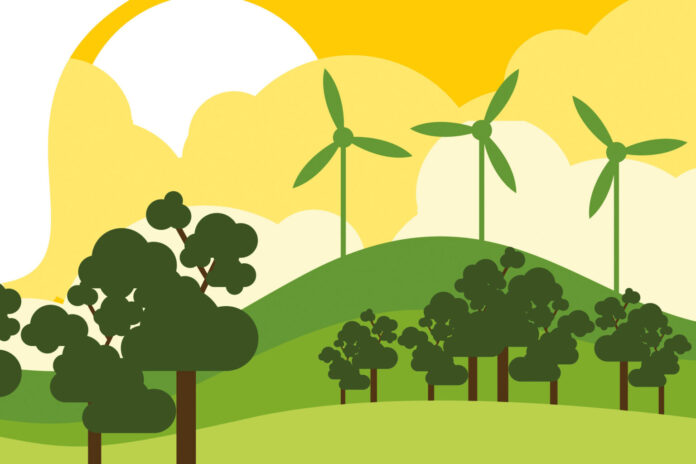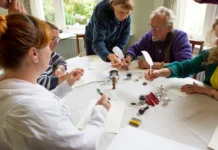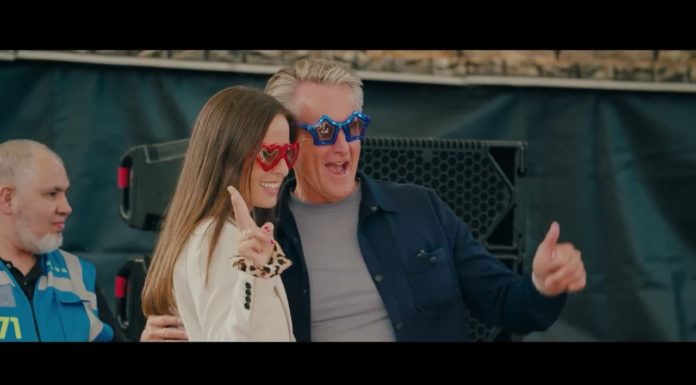
Q: We are surrounded by so many products and I’m curious about whether the people who design them have concerns for the environment in mind?
A: Your excellent question is actually an old one, explains Dr Adam de Eyto, the Head of Design at the Limerick School of Art and Design in the Technological University of the Shannon. Everything from your stove to your car, your clothing to your paper clip, engages designers. A catch-all phrase, “design” is the background work done across the spectrum, “from the built environment to architecture to product design, through to fashion, textiles, ceramics, graphic design, animation…” You name it, a designer was likely behind it.
You may not know who designed the shoes you’re wearing or the kettle you’re using, but “designers have a huge influence on how people use products,” says de Eyto. Studies have shown that 80% of the environmental impact is in the design phase.
“Every time a design team puts a pen to paper, they are making impactful decisions through their choices and those choices become manifest when we use those products in the world,” including which materials to use, how it will be used and what its afterlife might be.
Industrial designers, like visionaries Victor Papanek and Buckminster Fuller, have long seen the connection between our material creations and the health of the planet, especially in the face of the seemingly unlimited growth of the last century. de Eyto points to Papanek’s insight that industrial design created need where there wasn’t one before, very much to the environment’s detriment. Cars are an obvious example: “a hugely liberating piece of equipment for people, arguably singularly responsible for the kind of society we live in, at least in developed countries, but also one of the biggest impactors on the environment.”
‘DESIGNOSAURS’ BUT …
Industrial design is responsible for creating the first washing machine, adds de Eyto, creating the demand itself and rendering hand washing retrograde.
“Suddenly we have very user-friendly products called washing machines, but by default we create huge environmental impacts,” an unseen amount of energy going into making them, not to mention the wear and tear on clothing, the down pipe pollution and the loss of a connection with the clothing we wear.
But the tides are changing. Even though there are still some “designosaurs” out there, says de Eyto, there is a visible shift with young designers “who want to contribute meaningfully to the climate question through their design skills.”
“Design for sustainability suggests that we would, as designers, take more responsibility for the impact that our products and services have in the world from the get-go,” thinking about sustainability, the circular economy and even regenerative design, which would promote the regeneration of nature. This is also helped by a more informed public, comfortable with terms like greenwashing, and by changing standards. Last month, the European Parliament decided that companies claiming environmental credentials will need to verify those claims. “Sustainable is likely a word we will see less and less of in product descriptions,” de Eyto says, labels needing to get more specific.
TOP TIPS
These sorts of regulations are important because it’s “become incredibly difficult for the public to figure out what the impact of using products is,” says de Eyto. Smart meters and clever apps help with some calculations, “but it’s tricky stuff to communicate.”
For the non-designers among us, there are some tips for spotting more ecologically-minded designs.
“First call is to look at the brand,” says de Eyto – for example, Philips is known to have put a lot of work into reducing the environmental impact of its products. While purchasing white goods is price sensitive, when looking at the difference between, say, a twenty or ninety euro kettle, you might consider the greater cost of ownership, including how it was manufactured, how long it will last, its energy use, and how it can be recycled or repurposed. The brand name will often prove the better long-term investment.
“Second call is to look at the energy rating label on a brand,” de Eyto says, the closer to A you can get the better.
“Any product that has a complex mix of materials in it is very difficult to recycle, kind of what we’ve ended up with with mobile phones,” de Eyto notes. You could look to sources like Fair Phone (fairphone.com), designed with sustainability in mind. Primark Cares has invested in more sustainable fashion and a “share and repair” workshop at stores, in hopes of teaching skills for repairing clothing. From an ethical and commercial perspective, “it’s an imperative, looking ten years into the future, we know that any clothing brand relying on current fast fashion will be dead in the water.”
INFORMED CHOICES
Not that designers are calling for a return to the good old days of hand washing and trips to the blacksmith, but we can learn from traditional crafts and “reconnect from a materiality point of view with clothes and products,” letting us understand their complexity and “not just buy it and, at the end of its life, chuck it.”
de Eyto looks to wisdom from Yvon Chouinard, the founder of Patagonia, imploring us to live an examined life. “Don’t just wander along in life unconsciously consuming,” he says. You might not always know what to do, but “at least if you’ve examined it, you can make more informed decisions.”











